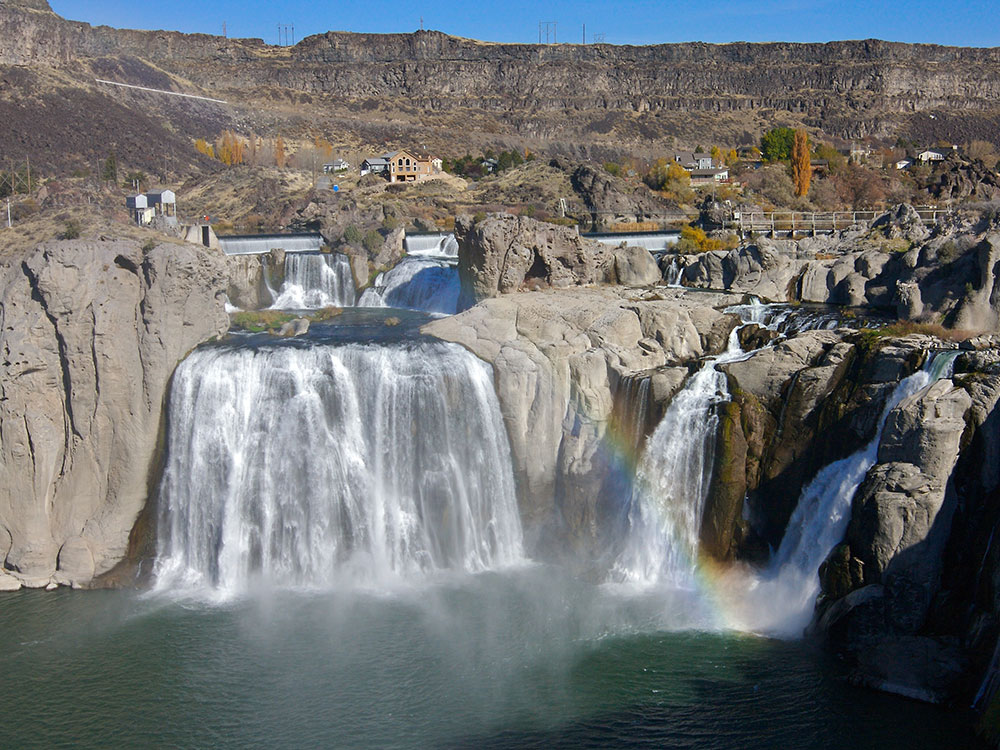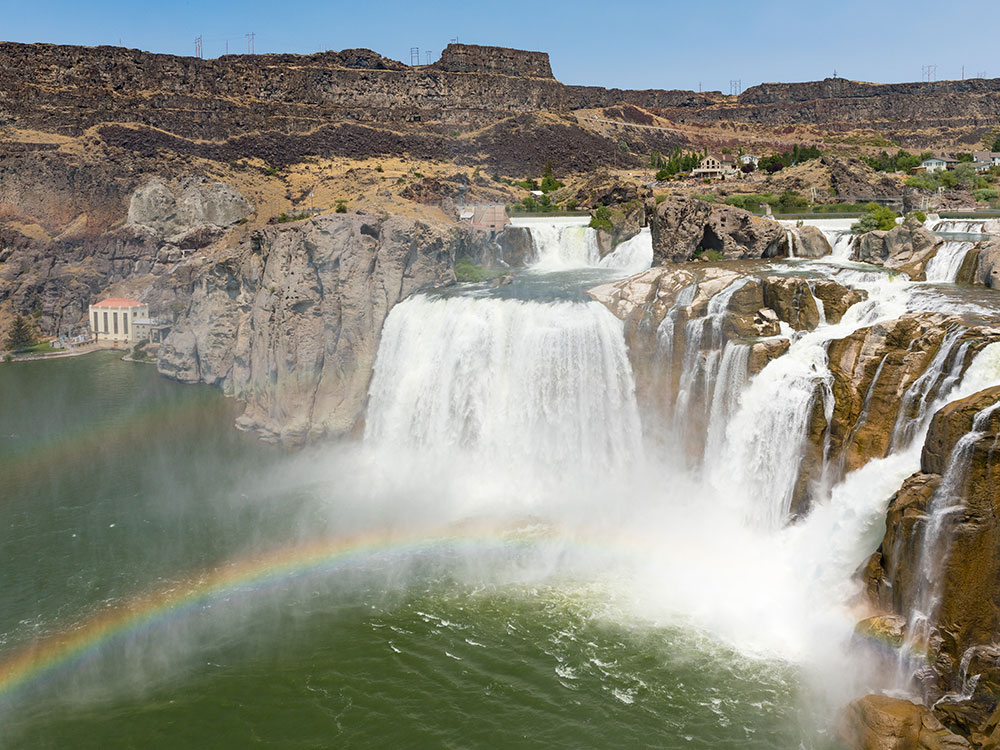Waterfall on the Snake River 212 feet (65 m) in height, 45 feet (14 m) higher than Niagara Falls, and flows over a rim nearly one thousand feet (300 m) in width
General Information
The park hours are from dawn to dusk.
From Salt Lake City, UT (218 miles): Get on I-15 N. Follow I-15 N and I-84 W to ID-50 S in Jerome County. Take exit 182 from I-84 W. Take E 3900 N Rd/Addison Ave to N 3300 E/Champlin Rd in Twin Falls County.
Shoshone Falls is a waterfall on the Snake River in south-central Idaho, approximately three miles (5 km) northeast of the city of Twin Falls. Sometimes called the "Niagara of the West," Shoshone Falls is 212 feet (65 m) in height, 45 feet (14 m) higher than Niagara Falls, and flows over a rim nearly one thousand feet (300 m) in width.

Formed by the cataclysmic outburst flooding of Lake Bonneville during the Pleistocene ice age about 14,000 years ago, Shoshone Falls marks the historical upper limit of fish migration (including salmon) in the Snake River, and was an important fishing and trading place for Native Americans. The falls were documented by Europeans as early as the 1840s; despite the isolated location, it became a tourist attraction starting in the 1860s.
At the beginning of the 20th century, part of the Snake River was diverted for irrigation of the Magic Valley. Now, the flows over the falls can be viewed seasonally based on snowfall, irrigation needs and hydroelectric demands. Irrigation and hydroelectric power stations built on the falls were major contributors to the early economic development of southern Idaho.
The City of Twin Falls owns and operates a park overlooking the waterfall. Shoshone Falls is best viewed in the spring, as diversion of the Snake River can significantly diminish water levels in the late summer and fall. The flow over the falls ranges from more than 20,000 cubic feet per second (570 m3/s) during late spring of wet years, to a minimum "scenic flow" (dam release) of 300 cu ft/s (8.5 m3/s) in dry years.
Shoshone Falls is in the Snake River Canyon on the border of Jerome and Twin Falls counties, 615 miles (990 km) upstream from the Snake River's confluence with the Columbia River. It is the tallest of several cataracts along this stretch of the Snake River, being located about two miles (3 km) downstream from Twin Falls and 1.5 miles (2.4 km) upstream from Pillar Falls.
Directly above Shoshone Falls, the Snake River narrows to less than 400 feet (120 m) wide and rushes over a series of rapids split by islands, before plunging over a vertical, horseshoe-shaped cliff 212 feet (65 m) high and 925 feet (282 m) wide. The appearance of the falls varies significantly with the river's flow rate. During high water, the falls appear as a single block stretching the full width of the river. In low water, the falls split into four or more separate drops; the widest, northern section is also called Bridal Veil Falls.
On September 8, 1974, American daredevil Evel Knievel attempted to jump over the Snake River approximately one mile (1.6 km) west of the falls on a rocket-powered motorcycle, the Skycycle X-2, after unsuccessfully petitioning the U.S. Government to let him attempt a jump over the Grand Canyon in Arizona. Knievel and his team purchased land on both sides of the Snake River and built a large earthen ramp and launch structure on the south rim.
A crowd of 30,000 gathered on Sunday afternoon to watch Knievel's jump, which failed because his parachute deployed prematurely, causing him to float down towards the river. Knievel, from Butte, Montana, likely would have drowned were it not for canyon winds that blew him to the river's south bank; he ultimately survived with a broken nose. In September 2016, professional stuntman Eddie Braun successfully jumped the Snake River Canyon in a replica of Knievel's rocket.
Today, Shoshone Falls Park encompasses the south bank of the Snake River at the falls. The park includes an overlook, interpretive displays and a trail system along the south rim of the Snake River Canyon. The trails provide access to nearby points of interest including Dierkes Lake and Evel Knievel's 1974 jump site.
This article uses material from the Wikipedia article "Shoshone Falls", which is released under the Creative Commons Attribution-Share-Alike License 3.0

-1000.jpg)